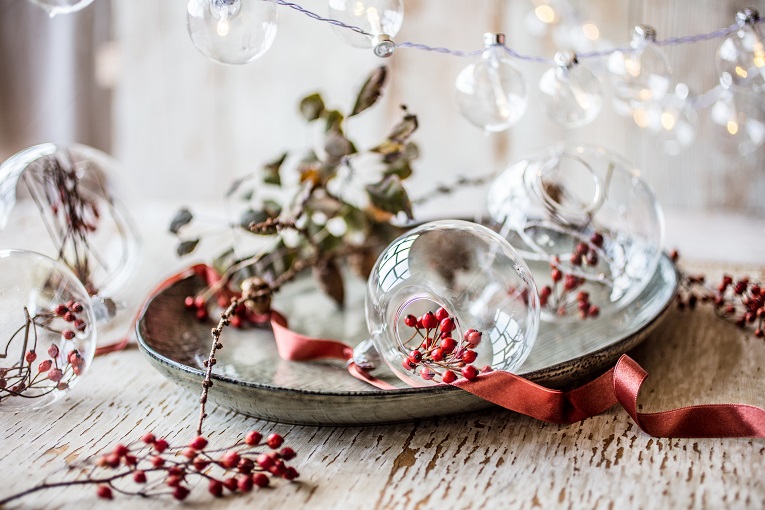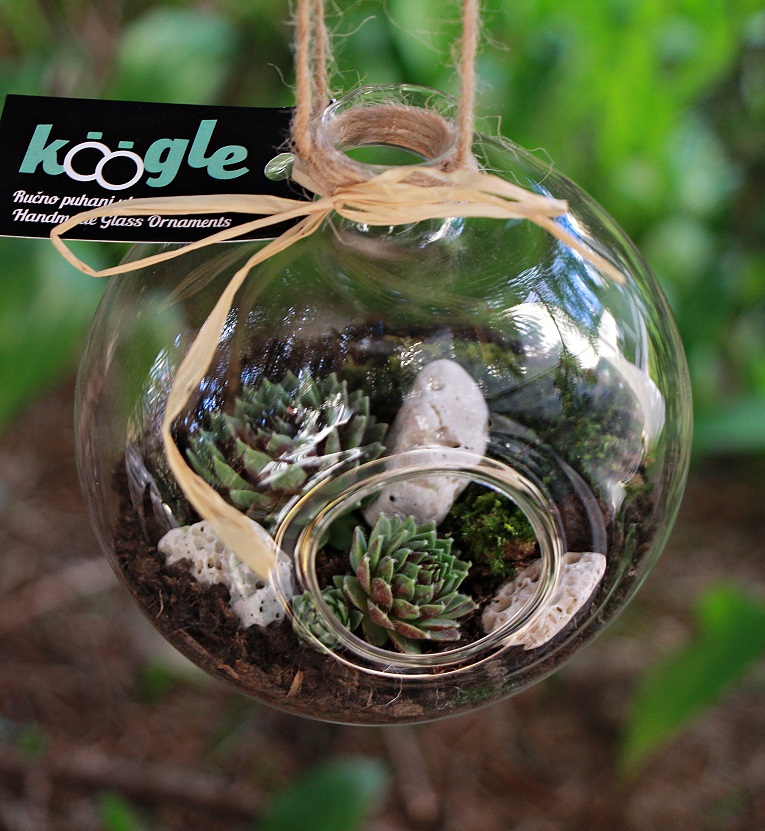“Glass blowing is very rare craft because it asks for an extremely demanding skill that can not be overcome in a few weeks or even months, the art itself is passed on by the word of mouth and takes years to master. Glassblowing skills are most often found and kept within the family where a family member-mentor is available daily to a family member-student who slowly masters the demanding glass blowing technique”, Martina tells us.

As Martina grew up in the family of craftsmen who were producing ornaments of glass, she has lived Christmas for 365 days a year and became tired of the conventional Christmas decorations. Five years ago her idea was born to learn to blow the glass and make something different from it. “So I started learning. It took time and patience, but the effort paid off by way of personal satisfaction. I realised that it was time to save my family craft from oblivion and decided to start something new. I am a great advocate of personal development and lifelong learning, as well as opening up and creating new opportunities so I’ve decided to learn new skills and make money from it”, she explains.

In 2014, Martina Šimunković revitalized the production of blown glass balls and other hollow glass ornaments. She designed a new visual identity of the product, while at the same time continuing the traditional family trade. “I made the products and named the brand and objects as Koogle. Koogle can be used as decorative items, souvenirs, confetti for weddings and gifts for business partners.”
Since glass is a completely natural material, a Koogle is minimalistically decorated and filled with natural materials (feathers, spit, wood, dry plants, moss, shells, sand, wool, berries, paper, etc.) as well as with other materials. The hand-blown Koogles are left translucent to further emphasize the beauty and elegance of the transparent glass. The finishing process is based on the principle of less. “Inspiration for decoration I find in nature. For me, the ecological aspect of production and the final product is very important. In everything I do, I try to emphasize the need to preserve the environment. Koogle is a fully recyclable product because glass is not garbage, but a raw material that can be fully recycled and reused countless times, with unchanged quality”, Martina emphasizes the importance of the ecological component of Koogle.

Koogle are intended for people who are not burdened with stereotypes and open to new things. They are recognized as something new and aesthetically valuable, and there is the added value because they are handmade and come from the endangered traditional craftsmanship which customers really value more and more.
Knowing the importance and significance of traditional trades as a constituent part of the local identity of Zagreb, through the glass-blowing trade, she wants to preserve positive experiences from the past, to convey traditional knowledge to new generations (primarily to their own children), and she is open to every new initiative.
Good cooperation was established with the Museum of Arts and Crafts and the Ethnographic Museum in Zagreb, which included this product in the offer of their souvenir shops. Koogle itself has been profiled as a product that can be offered to retailers who sell handmade items of high aesthetic value. So Koogle is regularly offered in ‘Take me home’ store in Zagreb.
“Since my product is most sought during Advent and is mostly related to Christmas, it is expected that I’m mostly busy in the fall months and just before Christmas. After that, work is less intense. Although production lasts for the whole year, sale is mostly reserved for the end of the year”, she says.

The production process has not changed since the very beginnings of glass-blowing, which is more than 60 years. Koogles are decorative products made by hollow glass tube heating and by blowing air out of the mouth to get the object freely formed in the space or the object that takes shape of the mould into which it is blown. The whole process is entirely handcrafted.
There is no need for heavy machinery or expensive tools to produce glass ornaments. “To study the skills of glass-blowing for me was a primary job, together with the family care, which involved a year of lots of work hours, patience and perseverance. I would come to the family workshop in the evening and struggle with glass. Even during weekends as well. Maybe someone would be faster, but my life circumstances have a profound effect on the learning dynamics“, explains Martina the whole production of one glass ball which needs to be switched from hand to hand exactly nine times. This describes the complexity of the process the best.
The great possibility of finishing has been made by experimenting in the process of melting glass and getting a hole in Koogle through which is possible to put into it some larger objects such as walnuts, pines and other small things.
In addition to the rounded form, a Koogle can also be moulded. These are primarily hearts and two sizes of glass Easter eggs. “Last year for Easter was the first time that I offered two sizes of glass Easter eggs. This is a unique product on the Croatian market, locally produced, as the other glass blowers don’t go outside the Christmas range. That’s why we like to emphasise that this is the only glass product like this in Croatia”, Martina notes.

“There are also hearts which are popular mostly for Valentine’s Day but also as gifts in weddings. There are also great reactions to the Ekoogle product. This is the name for the Koogle-terrarium where we plant succulents (usually Sempervivum tectorum), for their resistance and durability and easy maintenance.”
After the Christmas collection of Koogle, which was very well received, we try to put Koogle with the use of LED light shades on the market. A range of glass balls with the light of the lamp creates an impression of elegance and airiness and they are ideal for table decoration, especially for festive dinners or for creating a warm home or garden atmosphere. There are plenty of plans for Martina’s new products, and her desire is to experiment with various shapes which can be obtained by blowing hollow glass.
